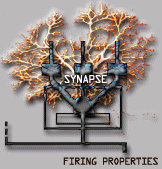 orden y caos
orden y caos
Definición: El caos es una palabra especializada. Caos es un subconjunto de dinámicas dentro de la complejidad, dinámicas que muestran (a) características recurrentes que no aparecen con el ruído blanco gaussiano y (b) una alta sensibilidad ante pequeñísimos cambios en las condiciones iniciales. El caos irreversible o disipativo, por ejemplo, es una condición fértil en posibilidades autoorganizantes. El ruido blanco gaussiano no. Un movimiento caótico se puede, con dificultad, controlar, lo cual es imposible de hacer con el ruido blanco gaussiano puro. En biología, la zona lindera entre el orden y el caos disipativo es frecuentemente propicia para el surgimiento de autoorganizaciones (Kauffman). Uno de los motivos de la fertilidad de evolución de un sistema complejo adaptivo ubicado en la zona lindera entre el orden y el caos, reside en que dos subzonas inicialmente alejadas tienen probabilidad no-nula de converger y dos subzonas inicialmente cercanas pueden diverger con igual probabilidad. Con ello están dadas las condicioones para que, con escasa probabilidad, aparezca una nueva organización espontánea de las estructuras generadas. El orden tiene que ver con la convergencia y el caos tiene que ver con la divergencia: en la zona entre orden y caos los dos fenómenos ayudan a la emergencia de nuevas soluciones, por aproximaciones sucesivas.
Fragmento de una lección de Luis Rocha:
Stuart Kauffman [1993, page 232] further hypothesizes that "living systems exist in the [ordered] regime near the edge of chaos, and natural selection achieves and sustains such a poised state". This hypothesis is based on Packard's [1988] work showing that when natural selection algorithms are applied to dynamic systems, with the goal of achieving higher discriminative power, the parameters are changed generally to lead these systems into this transitional area between order and chaos. This idea is very intuitive, since chaotic dynamical systems are too sensitive to parameter changes (structural perturbation), that is, a single mutation leads the system into another completely different behavior (sensitive to damage). By contrast, ordered systems are more resilient to damage, and a small parameter change will usually result in a small behavior change which is ideal for smooth adaptation (hill-climbing) in correlated fitness landscapes..However, even though very ordered systems can adapt by accumulation of useful successful variations (because damage does not propagate widely), they may not be able 'step out' of certain areas of their fitness landscapes. It is here that systems at the edge of chaos enter the scene; they are not as sensitive to damage as chaotic systems, but still they are more sensitive than fully ordered systems, and thus, some mutations will accumulate (by causing minor structural changes) and some others will cause major changes in the dynamics allowing more distant searches in fitness spaces. These characteristics of simultaneous mutation buffering (to small changes) and dramatic alteration of behavior (in response to larger changes) is ideal for evolvability [Conrad, 1983, 1990].
30.jun.1999
Pulsar tecla de vuelta
Glosario de Carlos von der Becke.